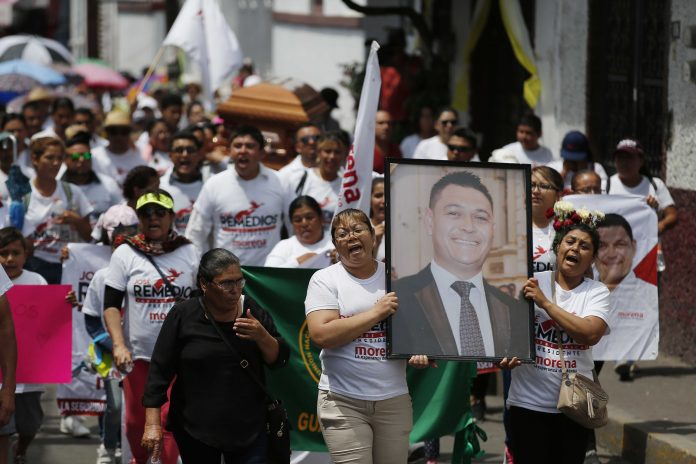
Associated Press
MEXICO CITY (AP) — Mexico will step up security for candidates heading into the largest elections in its history, noting that at least 64 murders related to the political process have already occurred since September, officials said Thursday.
Security Secretary Rosa Icela Rodríguez said more security forces will be sent to high-risk areas and security would be provided to candidates who receive threats to protect them from what she called the “crime party,” efforts by organized crime or white collar actors to designate or block candidates in races around the country.
The June 6 elections will choose a new lower chamber of Mexico’s Congress, 30 of the country’s 32 state legislatures and 15 governors, as well as local positions. In total more than 21,000 positions will be at stake.
Federal, state and local authorities will have to coordinate on identifying potential risks, Rodríguez said.
It won’t be easy.
Organized crime is always involved in elections. In 2018, when President Andrés Manuel López Obrador was elected, 48 people running for office were killed. Security consulting firm Etellekt tallied 543 aggressions toward politicians. In total, according to Rodríguez, there were 150 murders that year with some political connection.
In December, former Jalisco Gov. Aristóteles Sandoval was shot to death in Puerto Vallarta. Last week, a potential mayoral candidate in the Caribbean coast state of Quintana Roo was gunned down in a cafe. Ignacio Sánchez Cordero was the local tourism secretary in the town of Puerto Morelos.
But it isn’t just murder. Candidates face kidnappings, threats against their families, extortion, the burning of their homes or businesses. Criminal groups also donate money and offer their own protection to their preferred candidates. They do whatever it takes to control candidates who can help make sure they go unpunished.
“We know that the most vulnerable level of government is the municipal, especially when it’s in a zone influenced by organized crime,” Rodríguez said. Criminals use campaigns of fear to intimidate politicians and the general public.
The government identified seven states, mostly in the south and along the Pacific coast, that face the greatest threats.



















